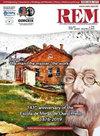回火对13Cr4Ni0.02C和13Cr1Ni0.15C钢在合成海洋环境中局部腐蚀的影响
Q3 Earth and Planetary Sciences
引用次数: 0
摘要
回火主要用于低碳马氏体不锈钢,以改变其机械性能。然而,它也改变了腐蚀性能;通常取决于热处理的温度和持续时间。本文研究了回火对13Cr4Ni0.02C和13Cr1Ni0.15C(%重量)钢腐蚀的影响。样品在650、700和750℃下回火,通过光学显微镜和海洋合成环境下的循环阳极极化测试进行表征。结果表明:13Cr4Ni0.02C回火试样的显微组织由板条组织转变为片层组织,在原有的奥氏体晶界中有析出物;回火对13Cr1Ni0.15C组织没有影响。阳极极化测试表明,随着回火温度的升高,13Cr4Ni0.02C样品的点蚀电位降低。13Cr1Ni0.15C回火后的点蚀电位值与13Cr4Ni0.02C回火后的点蚀电位值相近,均低于13Cr4Ni0.02C回火后的点蚀电位值。结果表明,随着回火温度的升高,13Cr4Ni0.02C的耐蚀性虽然有所降低,但仍优于13Cr1Ni0.15C。本文章由计算机程序翻译,如有差异,请以英文原文为准。
Tempering effect on the localized corrosion of 13Cr4Ni0.02C and 13Cr1Ni0.15C steels in a synthetic marine environment
Primarily, tempering is used in martensitic stainless steels with low carbon in order to change their mechanical properties. However, it also modifies the corrosion properties; usually depending on the temperature and duration of the heat treatment. This work investigated the impact of tempering on the corrosion of 13Cr4Ni0.02C and 13Cr1Ni0.15C (% weight) steels. Samples were tempered at 650o, 700o and 750oC, characterized by optical microscopy and cyclic anodic polarization tests in a synthetic marine environment. The results showed differences in the microstructure of the 13Cr4Ni0.02C tempered samples, which changed from lath to lamellar with precipitates in the prior austenite grain boundaries. On the other hand, tempering did not affect the 13Cr1Ni0.15C microstructure. The anodic polarization tests showed that the pitting potential of the 13Cr4Ni0.02C samples decreased with the tempering temperature increasing. Similar values of pitting potential were found with the 13Cr1Ni0.15C tempered samples, which were lower than the 13Cr4Ni0.02C samples after tempering. It shows that even though the corrosion resistance of the 13Cr4Ni0.02C reduces when the tempering temperature was increased, it is better than that presented by 13Cr1Ni0.15C.
求助全文
通过发布文献求助,成功后即可免费获取论文全文。
去求助
来源期刊

Rem-Revista Escola De Minas
工程技术-工程:土木
自引率
0.00%
发文量
0
审稿时长
6-12 weeks
期刊介绍:
REM – International Engineering Journal (antigua REM – Revista Escola de Minas) es la primera revista técnica de Sudamérica. Fue fundada en enero de 1936 por los estudiantes de la Escuela de Minas de Ouro Preto y desde entonces se ha especializado en la publicación de artículos en las áreas de la Ingeniería Civil, Geología, Metalurgia y Materiales y, Minería y Mecánica y Energía.
Su objetivo es servir como un medio de publicación para los trabajos técnicos y científicos originales de investigadores nacionales y extranjeros en esas áreas. Contribuciones originales (artículos y cartas) son aceptadas. Artículos de revisión dependen de la invitación y/o análisis de los Editores.
El envío de artículos para su publicación implica que el trabajo no ha sido publicado previamente, que no está siendo presentado para su publicación en otra revista y no se publicará en otro lugar, en la misma forma, sin el permiso, por escrito, de los Editores/Autores.
 求助内容:
求助内容: 应助结果提醒方式:
应助结果提醒方式:


